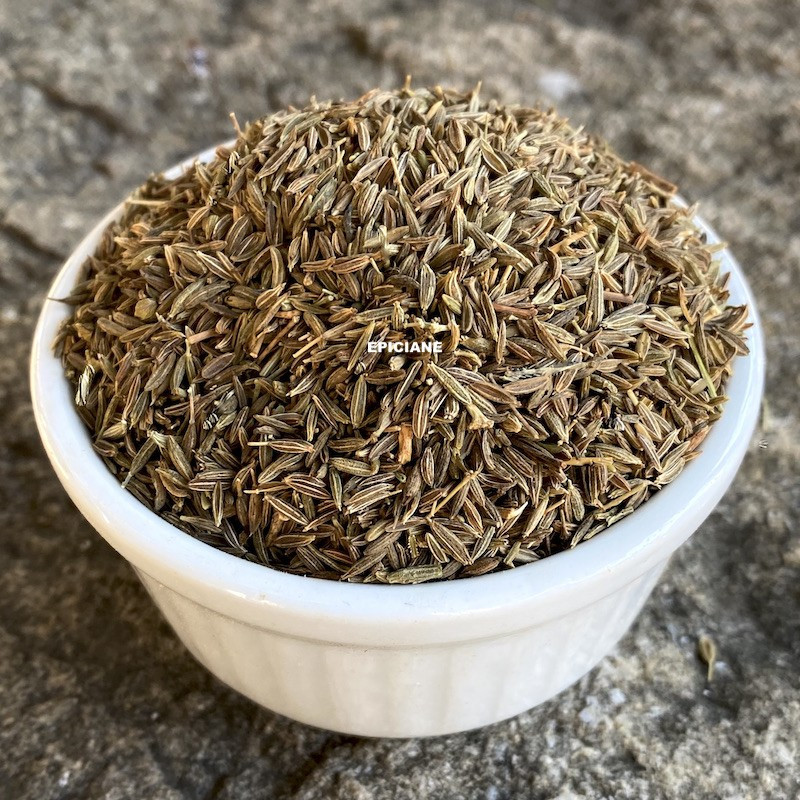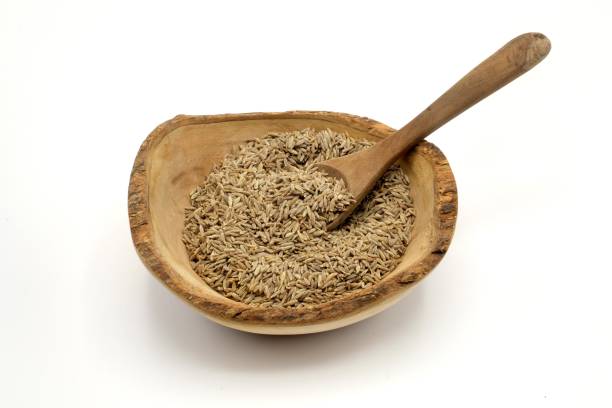
Reference: 20703402


Cumin has a very strong and aromatic flavor.
It is delicious in North African cuisine, in many vegetable dishes (carrots, chickpeas, fava beans), with cheeses, as well as in meats, particularly lamb.
 Delivery
Delivery
Mondial Relay
 Returns
Returns
See conditions
 Payments
Payments
100% secure
Delivered in a resealable bag
 Traditionally, cumin is paired with lamb, vegetables (carrots, zucchini, chickpeas, fava beans, etc.), soups, poultry, and even fish. It can also be combined with caraway in certain couscous blends. In fact, cumin is often mistaken for caraway because, despite their different flavors, their seeds look very similar.
Traditionally, cumin is paired with lamb, vegetables (carrots, zucchini, chickpeas, fava beans, etc.), soups, poultry, and even fish. It can also be combined with caraway in certain couscous blends. In fact, cumin is often mistaken for caraway because, despite their different flavors, their seeds look very similar.
Cumin seeds are excellent with cheeses like Gouda and Edam (similar to caraway!) and can even be added to bread.
When ground, cumin is a key ingredient in many blends such as curries, chili, garam masala, massalé, ras-el-hanout, and in many dishes like tagines and even gazpachos. Cumin's aroma is powerful and heady, so it should be used generously but not excessively, as it can quickly overpower other flavors in your dishes.

Origin: Syria
Scientific name: Cuminum cyminum
Nicknames: Moroccan cumin, false anise, white cumin.
The Greeks and Egyptians of antiquity already used cumin for its digestive properties and its effects on colic and bloating.
An annual herbaceous plant from the Apiaceae (Umbelliferae) family, cumin belongs to the same family as parsley and many culinary herbs. It is unrelated to black cumin, which is actually nigella, or caraway, with which it is often confused due to the similar appearance of their seeds.
Cumin is native to Southeast Europe and can also be found in North Africa and the Middle East, likely its origin, as well as in many other warm climate countries. Cumin thrives in sunny Mediterranean climates and rich, but not overly moist, soils. The plant grows to about 30 cm tall with thread-like leaves. The seeds are consumed dried, either whole or ground, and are harvested when mature and brown.
°°°
Cumin likely originated in the Mediterranean basin, the Nile Valley, or Asia Minor, where evidence of its use dates back at least 5,000 years. In ancient Egypt, its medicinal properties were well known, and pharaohs' tombs were sprinkled with its seeds.
In the Bible, cumin was used as currency to pay debts, and in the Middle Ages, serfs used it as barter to gain their freedom.
In ancient Rome, the plant was so precious that it was guarded!
In India, women in harems smoked it with cardamom and cloves for its narcotic effects at high doses.
The name originates from Semitic languages, and in medieval Europe, cumin already appeared in culinary recipes. It was believed that carrying a small pouch of seeds protected against bad luck and witches.
English: Cumin German: Kreuzkümmel
***
Data sheet
Reference: 20703402
Reference: 20818002
Reference: 30803202
Reference: fenouilE
Reference: 20711101
Reference: 10M6741201
Reference: coriandreE
Reference: 00033669-0001
Reference: 11N7754201
Reference: 124510
Reference: celerigraines
Reference: 11N7892701
Reference: 20703402
Reference: 9N76632004
Brand: Epiciane
Reference: 12N7949601
Reference: grainesaroussir
Reference: 2N7072401

Cumin has a very strong and aromatic flavor.
It is delicious in North African cuisine, in many vegetable dishes (carrots, chickpeas, fava beans), with cheeses, as well as in meats, particularly lamb.